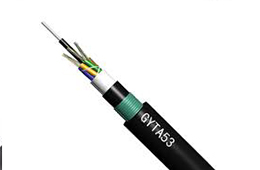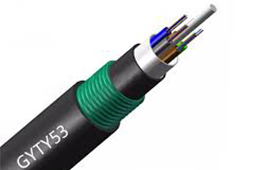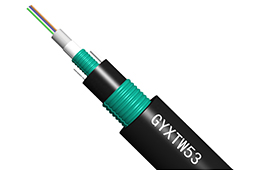The direct buried optical cable is armored with steel tape or steel wire on the outside, and is directly buried in the ground. It is required to have the performance of resisting external mechanical damage and preventing soil corrosion. Different sheath structures should be selected according to different use environments and conditions. For example, in areas with pests and rodents, an optical cable with a sheath to prevent pests and rodents from biting should be selected. Depending on the soil quality and environment, the depth of the optical cable buried underground is generally between 0.8m and 1.2m. When laying, care must also be taken to keep the fiber strain within allowable limits.
Direct burial should meet the following requirements:
1. Avoid areas with strong acid and alkali corrosion or severe chemical corrosion; when there is no corresponding protective measures, avoid termite damage areas and areas affected by heat sources or areas that are easily damaged by external forces.
2. The optical cable should be laid in the trench, and the surrounding area of the optical cable should be covered with a soft soil or sand layer with a thickness of not less than 100mm.
3. Along the entire length of the optical cable, a protective plate with a width of not less than 50mm on both sides of the optical cable should be covered, and the protective plate should be made of concrete.
4. The laying position is in places where excavation is frequent, such as urban access roads, and eye-catching sign belts can be laid on the protection board.
5. In the laying position in the suburbs or in the open area, at the straight line interval of about 100mm along the optical cable path, at the corners or joints, obvious orientation signs or stakes should be erected.
6. When laying in non-frozen soil areas, the optical cable sheath to the foundation of the underground structure shall not be less than 0.3m, and the depth of the optical cable sheath to the ground shall not be less than 0.7m; when it is located on the roadway or cultivated ground, it should be properly deepened, and should not be less than 1m.
7. When laying in the frozen soil area, it should be buried below the frozen soil layer. When it cannot be buried deeply, it can be buried in the dry frozen soil layer or backfill soil with good soil drainage, and other measures to prevent damage to the optical cable can also be taken. .
8. When the directly buried optical cable line intersects with the railway, highway or street, the protection pipe should be worn, and the protection scope should exceed the roadbed, both sides of the street pavement and the side of the drainage ditch by more than 0.5m.
9. When the directly buried optical cable is introduced into the structure, a protective tube should be set at the through-slope hole, and the nozzle should be blocked by water blocking.
10. The clear distance between the joint of the directly buried optical cable and the adjacent optical cable shall not be less than 0.25m; the joint positions of the parallel optical cables should be staggered from each other, and the clear distance shall not be less than 0.5m; the joint position at the slope terrain should be horizontal; for important circuits It is advisable to leave a spare way to lay the optical cable in the local section starting from about 1000mm on both sides of the optical cable joint.
Post time: May-20-2022


